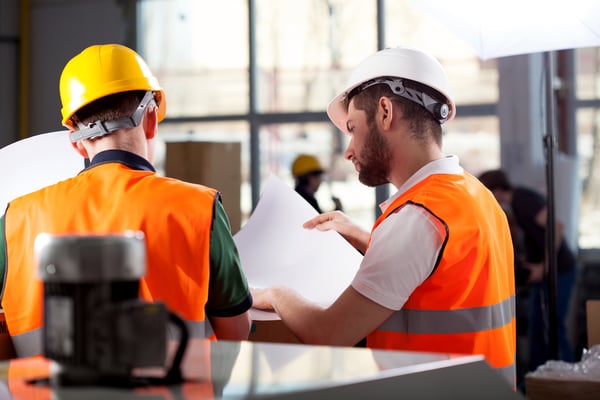Key Considerations When Packaging New Products For Startups
Packaging Materials | The Business of Packaging | Packaging Design
When launching a product as a new startup business, there is a lot to consider. Many steps must be taken to get your product designed, created, and ready to send to the market.
You are most likely at the beginning stage of getting your products ready for packaging. Chances are, you have been doing research online, which is how you stumbled across this article.
You probably feel some level of worry, stress or uncertainty about choosing packaging for your products as you have not done this before. Some of the questions you are asking your self probably resemble these:
What material should I choose for my packaging?
What equipment do I need for my packaging?
How much will my packaging materials cost?
How much will my packaging machinery cost?
Most likely, you are looking for guidance on launching a new product and trying to understand the appropriate packaging protocols.
Industrial Packaging has been helping companies package their products and get them to market in a timely fashion for over 65 years. In that time, we have become thought leaders on this subject.
In this article, we will help you to understand what needs to be done when developing packaging for new products for your startup.
Elements To Consider When Starting To Package Products
When beginning your quest to prepare your new products for packaging and shipping, you need to develop a solid definition of your project and make an outline of everything you will need to bring the project to fruition.
Cost
What is the total cost to produce your product? You want to think about this not only from a manufacturing or sourcing standpoint but also from a total cost perspective.
How much does it cost to package your final product? How much does it cost to ship it? What is the cost to replace or fix damaged items?
Answering questions like these will give you a clear picture of what your total cost of production is for each of your products and will allow you to find areas to optimize. This is how you can identify elements such as machinery or materials that can lower your costs and improve your production.
Tracking metrics for each aspect that affects the cost of your products is a critical practice to implement. This ensures that you fully understand the cost of your product from the beginning to the end of the product's journey from production to unboxing.
Materials
Packaging materials are materials that are used to package your products. Here are some examples of packaging materials:
When it comes to choosing the right materials for packaging your products, there is a whole universe of different packaging materials to choose from. Not all materials are an excellent choice for every product.
Depending on the shape, size, and weight of your product, certain materials are going to make more sense than others when it comes to providing the best type of packaging for your items.
Choosing the wrong materials for your product's packaging can result in wasted time, money, materials, and potentially cause problems for your packaging equipment.
Taking the time to analyze your products and working with an independent packaging professional is an integral part of defining your product. They will be able to advise you on which materials are and are not a good fit for your unique packaging needs.
Machinery
When setting up a packaging line for a start-up, chances are, those who are involved are new to the process of building and running a packaging line. Packaging lines can be simple and straightforward or extensive and complex in nature.
They can be run on manual labor or fully automated machinery. Most of the time, a packaging line will have some combination of human energy and semi-automated machinery working in tandem.
When it comes to choosing machinery for your product packaging, there are multiple factors to consider. For example, how many products will you be packaging a day? How much does each of your products weigh? How big or small is your product? What is the shape of your product?
Each of these items will affect your choice of machinery (assuming you have the budget for the proper equipment, if not, you will want to consider leasing).
Depending on your answers to the questions above and the monthly volume of your products packaged, you will need to analyze your products and choose machinery based upon the answers to each question.
It would be a good idea to analyze your current packaging line and protocols by an independent packaging expert. They will be able to provide you with data that can help you to choose the right equipment for the size, shape, and weight of your products, as well as your monthly volume of products packaged.

Labor
Another critical aspect of the design of your project includes labor. Should you use manual labor exclusively? Should you use automated machinery instead? Perhaps a combination of human and mechanical work? Depending on the volume of products you are packaging, human labor may actually cost you more than machinery.
That being said, machinery can be an expensive upfront cost. Without proper financial options, such as leasing, you may not be able to invest in all the machinery you would ideally like to have. In this case, you will have to lean on manual labor or some combination of manual labor and machinery labor.
Either way, you should track the cost of using both human and machinery for production. As time goes on, you should be able to find opportunities to help streamline your production and add or remove human labor as needed for profitability.
If you are hoping to buy machinery and run a semi or fully automated packaging line, you should be aware that most leasing companies will not approve your business for a lease until you have been in business for at least 3-5 years.
Should You Package Your Products In Shrink Film?
When Do You Want This Packaging Project To Be Completed?
We all know that time is money. So, it is relatively obvious that you will need to create a timeline that allows you to produce an efficient, quality, and quick production. This helps ensure that you are using your time as wisely as possible.
To successfully launch a packaging line for a startup with a new product, you will have to determine which parts of the process need to be completed and when. You will have to work with your packaging manager and your operators to set goals for your packaging line.

The goals may include:
- Time to produce your product
- Time to package your product
- Time for rework
- Time to remedy damages
- Time for machinery maintenance
- Time for packaging line analysis
You have to calculate all of the items above to ensure that you can produce your products, package them, and get them to market in the desired time frame with the budget that you have available.
Once you have crunched all the numbers, you will be able to set specific goals for the dates and approximate times you would like to see your project completed.
What Is The Budget For Your Packaging Project?
To figure out your budget, you will have to examine a few dynamics of your packaging line closely. Ask yourself questions such as:
- What are the production requirements/how many packages per minute, weekly, monthly, are you hoping to put out?
- What materials are we using? Can we change them to save costs without sacrificing quality?
- What type of machinery are we using? Are we using the correct machinery for our needs? Do you need to upgrade, and if so, what is the cost?
- How many manual laborers are we employing? Should we automate or higher more people and use human labor for our processes?
- Do we want to run our packaging line or outsource its operation to a third-party partner?
Answer these questions will help you better to understand the financial aspect of your new products and help you to figure out what your total cost to run your line will be.
If you are not sure about how to go about financing your packaging machinery costs, you will want to compare leasing vs. buying options to see which is a better choice for your business.
Do You Have Enough Space For A Packaging Line?
Before you go buying machinery, hiring line operators, or purchasing materials to package your products, you need to make sure that you have the physical space to set up the packaging line that your products demand.
If you do not have the appropriate space to set up and run your equipment, while providing a safe and comfortable environment for your line operators to work, you will have to consider buying or renting the required space to run your packaging line.
When You Are Ready To Launch Your Packaging Line
Once you have taken all the proper precautions, crunched the numbers, set up your line, implemented the appropriate KPIs and safety protocols, purchased and installed the correct machinery and materials, and trained your line operators on your packaging processes, you will finally be ready to launch your product.
If you need any assistance in any or all of these steps, you may want to consider speaking to one of our packaging experts. They will be able to assist you with any element of this process and help you to choose the proper machinery, materials, and vendor, even if we are not the best fit for your business.
About Nathan Dube
As the Digital Marketing Specialist at Industrial Packaging, I am honored to create content for such a phenomenal company and work with one of the greatest teams in the Packaging Industry. Whether creating a video, writing blog posts or generating other pieces of content and multimedia, I am always excited to help educate and inspire our prospects and clients to reach their highest potential in regards to their packaging processes and needs.




